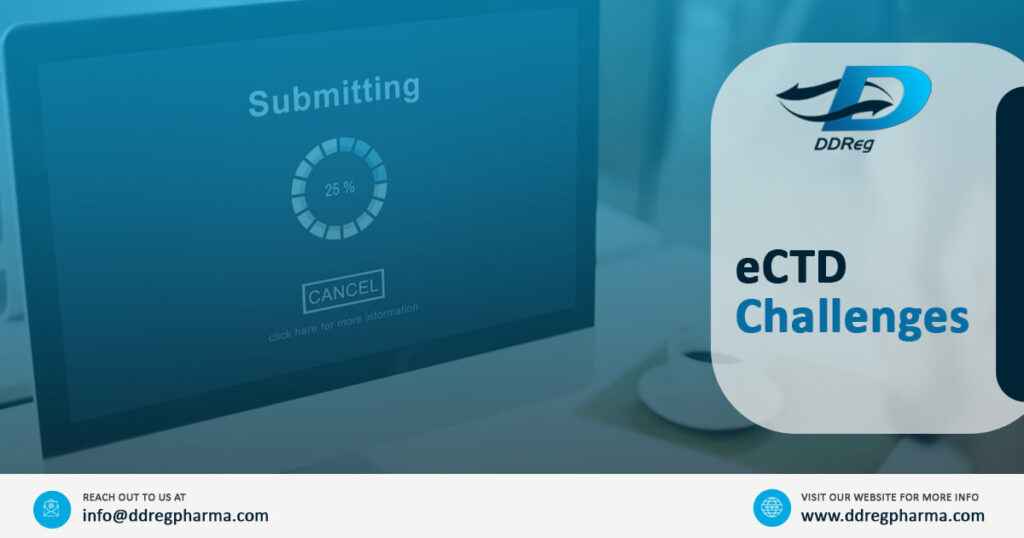Electronic regulatory submissions have their roots in the late 1980s and have significantly developed over the last few years, especially in key markets. The migration from paper-based submissions to electronic submissions has revolutionized the management and exchange of regulatory information. Additionally, it enables more efficient review processes and enhances the lifecycle management of submissions. In the year 2003, the ICH embraced the significant landmark of the Electronic Common Technical Document (eCTD) v 3.0 guideline, which established a harmonized structure and format for electronic regulatory submissions. It offered several benefits including simple workability, data transparency, and easy facilitation of information sharing between sponsors and relevant authorities. Today, the majority of regulatory agencies are endorsing the use of the CTD structure and encouraging the shift from CTD to eCTD. Shortly, eCTD will be the only acceptable format recognized for drug marketing authorizations, supplements, and effective lifecycle management for submissions. Despite the fact that the eCTD has greatly aided in handling large volumes of critical regulatory documentation, some glitches make the submission and publishing process cumbersome for organizations, and many life sciences companies are finding it difficult to meet the timelines set by the FDA to fulfill the submission benchmarks of the eCTD format.
It’s crucial to understand eCTD requisites for its effective and successful application to regulatory submissions. These requirements, nevertheless, sometimes are not evident, and problems can arise if documents do not meet the accepted eCTD standards. If this situation rises, sponsors could need to make last-minute revisions, endangering timeframes or even worse, there can be chances of technically rejecting the entire file [1,2].
Diving into a few common challenges encountered during eCTD submissions:
1. Deficiencies in the legibility of the documents in the application: It frequently occurs that documents are submitted to the Agency without first being reviewed for clarity. This may lead to Refuse to Receive (RTR), and its amendments are considered as a new submission and may incur an additional fee as well as time for resubmission of the application [3].
2. Manual bookmarking: Bookmarks are essential components for smooth navigation within the dossier. However, bookmarking and hyperlinking tasks are repetitive and time-consuming which can cause delays in review processes and eCTD Publishing & Submission.
3. Hyperlinking issues: A common issue that publishers face is broken or invalid links because the section does not exist and cannot be linked. While in some cases this is due to typographical errors made while drafting the document, many cases arise because the authors are not fully aware of the content that can be linked. For instance, referencing a section with a higher level of granularity i.e., modules as a whole rather than single documents, is a common error when hyperlinking [2,4].
4. Large-size file upload: publishing and submitting large-size files to the submission portal while adhering to stringent agency timelines can be a challenge. Many agency portals have a file size limit and/or do not accept multiple submissions for a single application [5].
5. UUID validation error: repeated UUID for documents in the dossier can lead to validation errors and can result in rejection by Agencies [6].
6. Managing product lifecycle: One of the biggest barriers to the eCTD right now, according to Dr Andrew Marr, Director of Electronic Documentation in European Regulatory Affairs for GlaxoSmithKline, is managing all of a product’s lifecycle records. The strict eCTD structure, which offers little leverage in the pharma product lifecycle management and metadata, is one of the greatest drawbacks noted in the Suchanek and Ostermann study. It can be difficult to express changes that take place during the product lifecycle, such as manufacturing changes, in the eCTD structure.
7. Improper granularity: Granularity is the hierarchy of the files and folders present in the eCTD directory tree. It is often claimed that eCTD Publishing & Submission starts with the author because a document created using a quality template and the proper level of granularity has such a significant impact on publishing. Moreover, all regulatory bodies that receive eCTD submissions are reporting major issues with a lack of compliance with the electronic format and difficulty navigating the electronic files that make up an eCTD, thus, making it difficult for reviewers to carry out their work efficiently. This includes navigation within documents as well as proper use of templates. This is due to a lack of knowledge about what they are and what they perform thus making it difficult to fully comprehend the benefits of eCTD [7].
Other challenges in eCTD Publishing & Submission including but not limited to these are regional variations in hyperlinking, bookmarking, and PDF versions, the need for cutting-edge technology and knowledgeable employees, the challenge to incorporate last-minute changes, different regional validation rules and authentication practices, improper granularity, and incorrect version numbers [2].
To summarize, the use of the eCTD format has now become obligatory in the major markets. Therefore, it is now crucial for businesses to have a uniform platform that favours the lifecycle of every type of inherent submission. This way, they can manage the complex process of compiling, acclaiming, releasing, and documenting new drug /medical device applications with ease. However, businesses typically don’t have such an integrated platform. Some businesses continue to use outdated paper-based procedures, losing plenty of time and money in the process. Lifesciences Consulting Firm businesses must have all documents, including answers to queries, updates, and restorations, in a standardized electronic format to complete the eCTD Publishing & Submission effectively.
References and further reading:
https://www.ijpcbs.com/articles/electronic-common-technical-document-ectd-areview-of-history-benefits-of-implementingchallenges-modules-risks-involved-i.pdf
http://jddtonline.info/index.php/jddt/article/view/3334
https://getd.libs.uga.edu/pdfs/ross_charnelle_201008_ms.pdf

